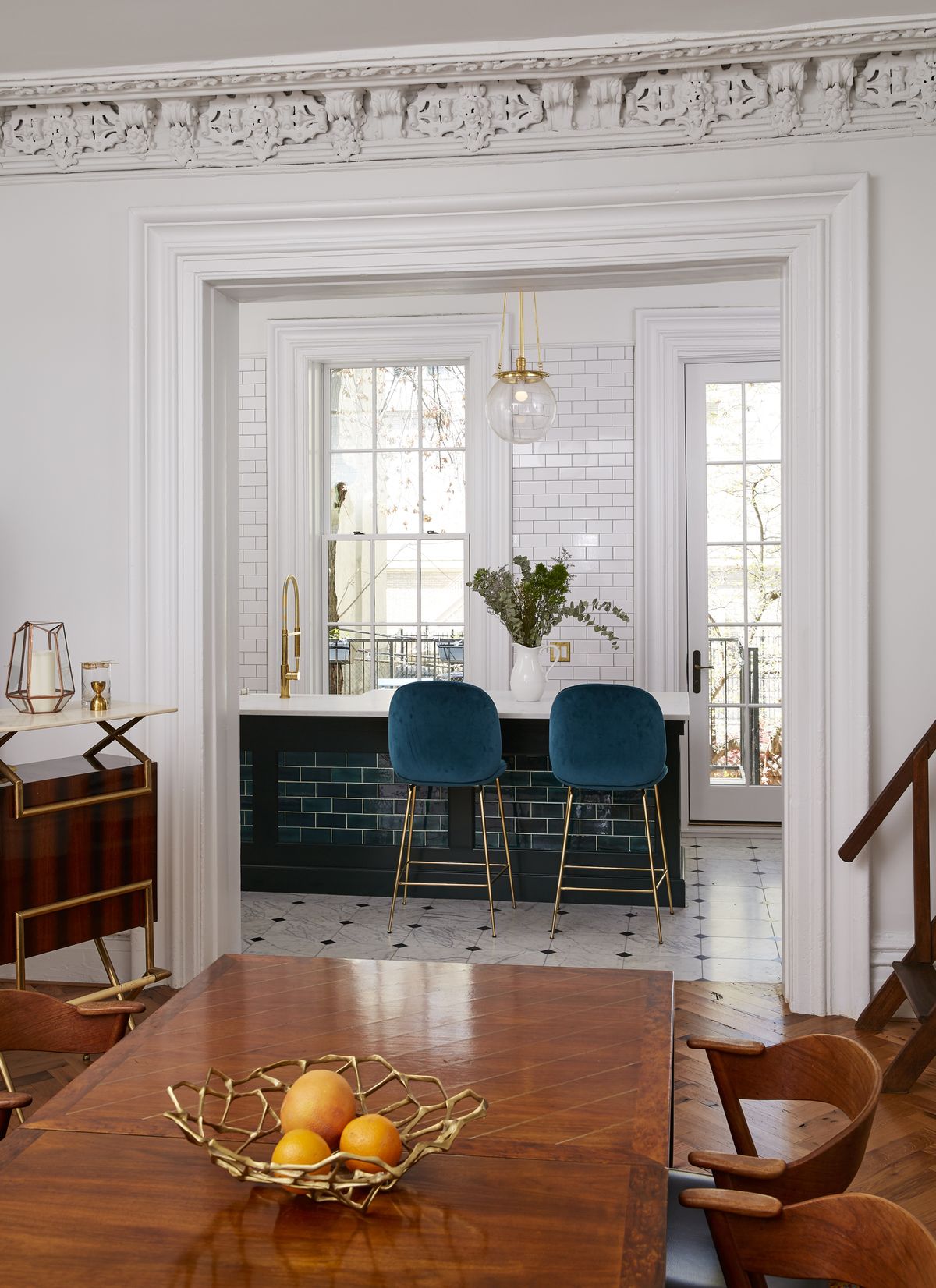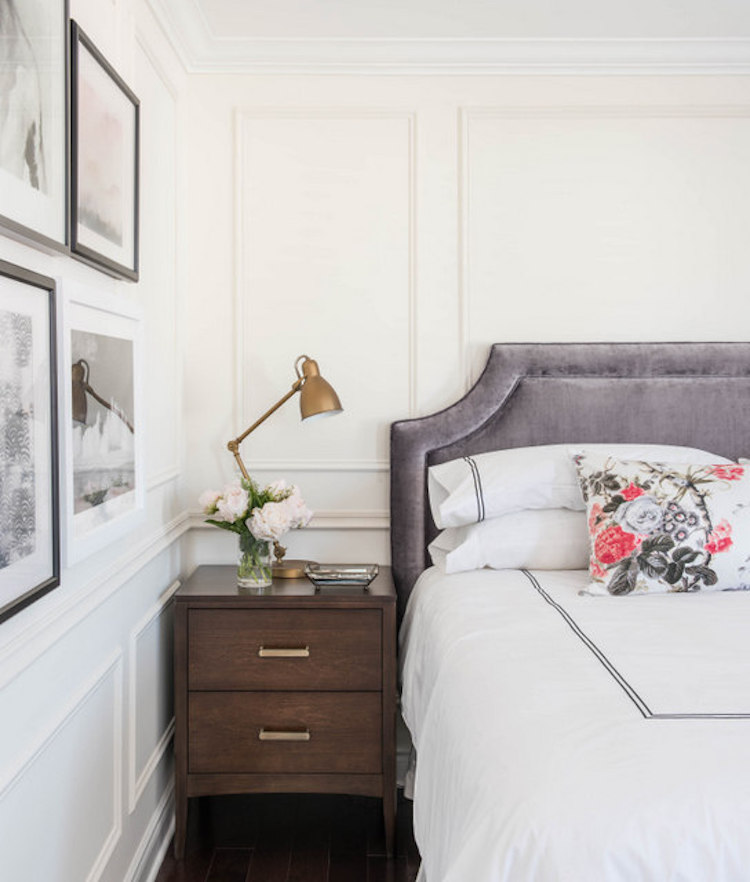Adding molding to your walls is one of the easiest ways to add elegance and sophistication to any room. Wall moldings not only enhance the architecture of a space, but they also serve practical purposes like hiding unsightly seams and cracks.
I’ll walk you through everything you need to know about selecting, installing, and styling decorative wall molding. We’ll cover the different types of molding profiles, materials, and finishes. I’ll share my tips on choosing moldings that complement your existing decor and architecture. You’ll learn all about molding installation including the tools and techniques you need.
I’ll provide inspiration and ideas for decorative touches that take your molding from basic to beautiful. A small molding upgrade can make a huge impact in making your home look polished, put-together, and expensive.
If you’re looking for an easy DIY project to elevate your space, then adding wall molding should be at the top of your list! Read on to learn everything you need to know to add a touch of sophistication with decorative moldings.
What is Wall Molding?
The molding installed on walls for decorative purposes is generally referred to as “wall molding” or “decorative wall molding.” However, there are more specific names for certain types of wall moldings:
- Chair rail – Horizontal molding installed about 1/3 of the way up the wall to protect the wall from chair scrapes. Also adds decorative detail.
- Picture rail – Installed near the top of walls for hanging picture frames. Adds decorative detail.
- Wainscoting – Panels lining the lower portion of walls, usually made of decorative molding.
- Crown molding – Elegant molding that transitions between the wall and ceiling.
- Baseboard – Molding trim along the bottom of walls where they meet the floor. Primarily functional but can also be decorative.
- Panel molding – Consists of large muleded frames that create recessed panels on the walls.
- Cove molding – Concave-shaped trim for corners and ceilings.
So, any molding installed on walls for aesthetic purposes can be referred to generally as decorative wall molding. But there are many more specific names depending on the type, location, and purpose of the molding.
Why Wall Molding is a Good Idea
Decorative wall molding is often considered upscale and sophisticated when found in interior design.
There are a few reasons why wall molding is considered sophisticated and Parisian interior design influences plays a key role.
- Ornate Details – Elaborate crown moldings, chair rails, and paneling with intricate designs, carvings, and relief details evoke a sense of refinement. This ornamentation is reminiscent of French architectural details.
- Gilded Finishes – Gold leaf, gold painting, and distressing on molding provides an opulent, dramatic effect. Parisian interiors often incorporate gilding.
- Classical Styles – Symmetrical, formal molding profiles like Neoclassical and Louis XVI-style look very elegant and refined. These designs were popularized in French palaces and manor homes.
- Craftsmanship – Moldings made from plaster, wood, or composites that are expertly shaped, carved and installed make a statement of quality craftsmanship. This artistry is integral to Parisian design.
- Verticality – Tall ceiling heights with stacked crown moldings draw the eye up and make rooms feel grand. The majestic proportions add sophistication, like in Parisian palaces and hotels.
- History – Wall moldings reference classical architecture and design eras like the Rococo and Renaissance, giving a sense of heritage and tradition. This connects to the history embedded in Parisian architecture.
So in summary, the artistic details, classical styles, gilded touches and vertical proportions that make wall moldings feel sophisticated are definitely influenced by iconic Parisian interiors through the ages.
Wall Molding Costs
Wall molding can range from inexpensive to quite pricey, depending on the material, style, and amount needed. Here’s a quick overview of the cost factors:
- Material – Wood molding is generally the most expensive option, especially solid hardwoods like oak or maple. Decorative molded millwork can cost $10-30+ per linear foot. Polymer/foam options are cheaper, around $2-8 per linear foot.
- Style – Intricate, highly decorative molding profiles like crown molding cost more than simple trim pieces. Hand-carved moldings are also pricier.
- Labor – Hiring a professional to install molding will add to the total cost significantly. Prices vary based on location and complexity.
- Amount needed – The more molding required in a space, the higher the total price tag. Molding an entire room will cost more than just one focal wall.
In general, simpler designs, DIY installation, and cheaper materials like MDF or polymer molding can keep costs down to $2-5 per linear foot. On the other end, intricate wood moldings installed professionally could be $10-50+ per linear foot.
The good news is molding can be added strategically in smaller amounts to get a big visual impact while working within a budget. Focusing on one or two key areas is a smart approach.


Hi! Where are the nightstands from?.
They are from Geovin!
Beautiful. Where is the bed from?
Lovely!!! Where is the floral lumbar pillow from?
Where is the beautiful dresser from? Thank you!